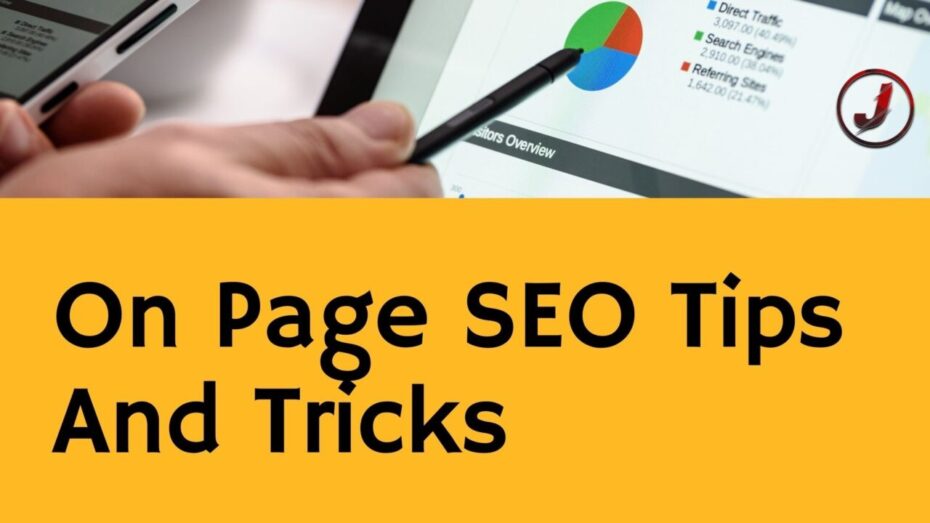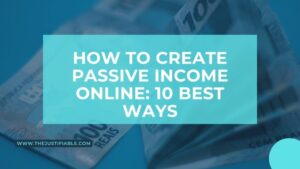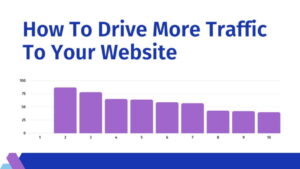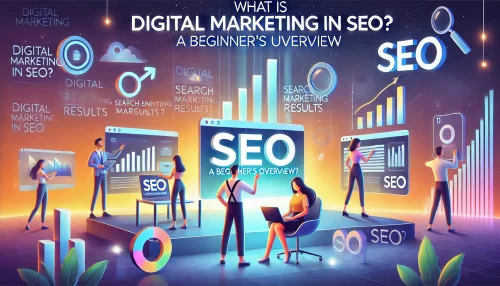Table of Contents
SEO tips and tricks are essential for enhancing your internet presence and driving organic traffic to your website. Implementing these strategies can significantly improve your site’s visibility on search engines, ultimately leading to more engagement and conversions.
Mastering On-Page SEO Basics
On-page SEO is a crucial element of your digital marketing strategy. By mastering these basics, you can ensure your website is optimized for search engines, improving visibility and attracting more visitors. Most importantly, these techniques will help you provide a better user experience, which is essential for retaining your audience.
I strongly believe understanding the fundamental principles of on-page SEO is the first step toward a successful online presence. By implementing these strategies, you can significantly enhance your website’s performance and achieve your digital marketing goals.
SEO Services Recommendations
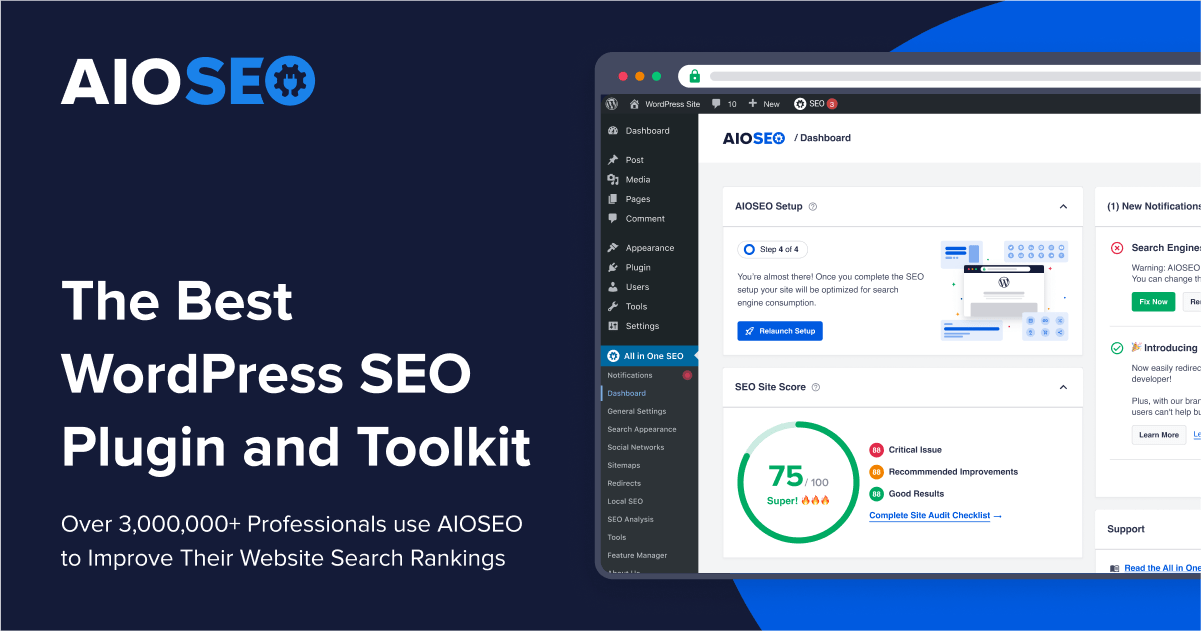 AIOSEO
| 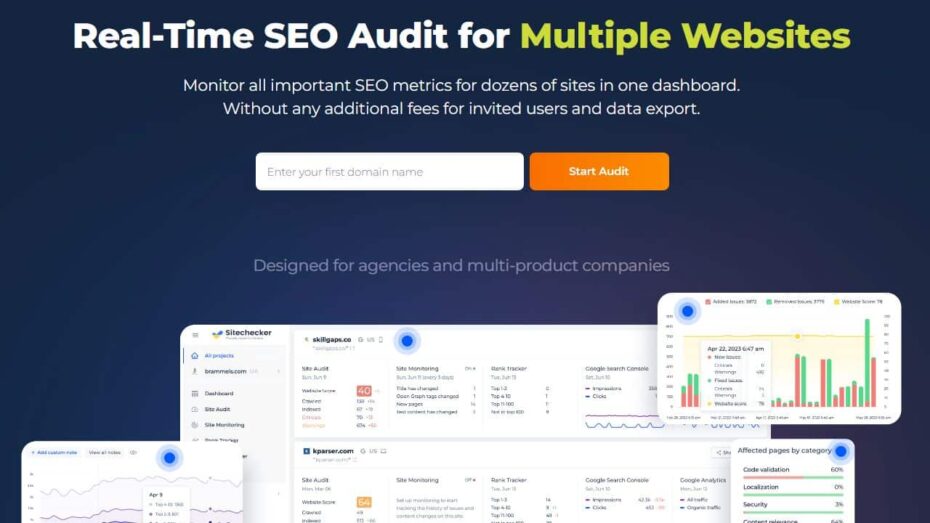 Sitechecker
| 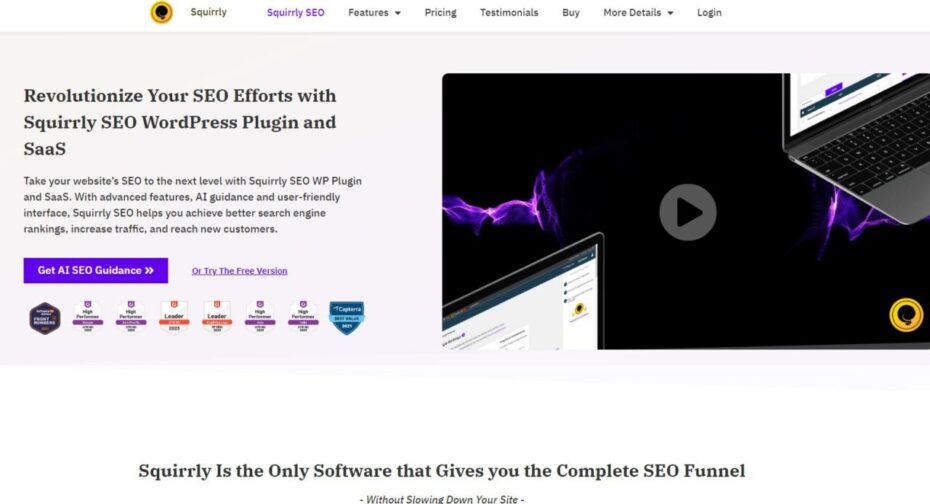 Squirrly
|
Understanding SEO Tips and Tricks
SEO tips and tricks are essential for optimizing your website effectively. I suggest starting with the basics, such as understanding how search engines work and what factors influence your ranking. This knowledge will help you make informed decisions about your SEO strategy.
My advice is to focus on creating high-quality content that addresses the needs of your audience. This approach not only improves your search engine rankings but also establishes your authority in your niche. I recommend you to regularly update your content to keep it relevant and valuable.
I point out that optimizing your website’s structure and navigation is also crucial. A well-organized site makes it easier for search engines to crawl and index your content. I believe using clear, descriptive URLs and a logical site hierarchy can greatly enhance your SEO efforts.
Finally, I advise you to monitor your SEO performance using analytics tools. By tracking your progress, you can identify areas for improvement and adjust your strategy accordingly. This ongoing process is vital for maintaining and improving your search engine rankings.
Importance of Keyword Research
Keyword research is a foundational aspect of on-page SEO. I recommend you to start by identifying the keywords your target audience is using to search for information related to your niche. This step helps you understand their needs and preferences.
I believe using keyword research tools can make this process more efficient. Tools like Google Keyword Planner or Ahrefs provide valuable insights into search volume, competition, and related keywords. This data is crucial for developing a successful SEO strategy.
I would say that integrating your keywords naturally into your content is essential. Avoid keyword stuffing, as it can harm your rankings and reduce the quality of your content. My suggestion is to use keywords in a way that enhances readability and provides value to your readers.
Most importantly, I advise you to focus on long-tail keywords. These keywords are more specific and often less competitive, making it easier to rank higher in search results. By targeting long-tail keywords, you can attract more qualified traffic to your website.
Effective Use of Meta Tags and Descriptions
Meta tags and descriptions play a significant role in on-page SEO. I advise you to create compelling meta titles and descriptions that accurately reflect your content. This practice not only improves your search engine rankings but also increases your click-through rate.
My recommendation is to include your primary keyword in your meta tags and descriptions. This helps search engines understand the relevance of your content to the user’s query. However, I strongly believe it’s essential to keep your meta descriptions concise and engaging.
I suggest using unique meta tags and descriptions for each page on your website. This approach ensures that each page is optimized for its specific content, improving your overall SEO performance. I point out that duplicate meta tags can negatively impact your rankings.
I recommend you to regularly review and update your meta tags and descriptions. As your content evolves, so should your meta information. By keeping this data current, you can maintain its relevance and effectiveness in driving traffic to your site.
Boost Your Rankings with Keyword Research
Keyword research is a vital part of any successful SEO strategy. I advise you to start with a thorough analysis of the keywords your target audience uses. Most importantly, this process will help you understand what your potential visitors are searching for and how you can meet their needs effectively.
I believe keyword research can significantly boost your search engine rankings. By identifying the right keywords, you can optimize your content to match user intent, increasing your visibility and attracting more organic traffic. My suggestion is to use reliable tools to ensure your keyword strategy is data-driven and effective.
Identify High-Volume, Low-Competition Keywords
High-volume, low-competition keywords are the sweet spot for SEO. My recommendation is to focus on finding these keywords to maximize your chances of ranking well. Tools like Google Keyword Planner and Ahrefs can help you discover keywords with high search volume and low competition.
I would say targeting these keywords allows you to attract a significant amount of traffic without facing too much competition. This strategy is especially useful for new websites looking to establish a foothold in their niche. My advice is to incorporate these keywords naturally into your content to improve readability and relevance.
I suggest monitoring the performance of your chosen keywords regularly. This ongoing process helps you identify which keywords are driving traffic and which ones need adjustment. I strongly believe that staying updated with keyword trends can keep your SEO strategy effective and competitive.
Finally, I recommend you to optimize not just your content, but also your meta tags and descriptions with these high-value keywords. This comprehensive approach ensures that every aspect of your webpage is aligned with your SEO goals, improving your overall performance.
Utilize Long-Tail Keywords for Targeted Traffic
Long-tail keywords are specific phrases that target niche segments of your audience. I think focusing on long-tail keywords is a smart strategy for attracting highly targeted traffic. These keywords often have lower competition and higher conversion rates.
I point out that long-tail keywords are usually more descriptive and closely related to user intent. For example, instead of just “shoes,” a long-tail keyword would be “best running shoes for flat feet.” My advice is to integrate these specific phrases into your content to address the precise needs of your audience.
I recommend you to use tools like SEMrush or Ubersuggest to identify relevant long-tail keywords. These tools can provide valuable insights into the search volume and competitiveness of potential keywords. I believe this information is crucial for developing a focused and effective SEO strategy.
I suggest creating content that answers specific questions or solves particular problems related to your long-tail keywords. This approach not only improves your SEO but also enhances user engagement and satisfaction. Most importantly, it positions you as an authority in your niche, fostering trust and loyalty among your audience.
Analyze Competitor Keywords for Opportunities
Analyzing competitor keywords can uncover valuable opportunities for your SEO strategy. I recommend you to start by identifying your main competitors and examining the keywords they are ranking for. This analysis can reveal gaps in your own strategy and provide new ideas for keywords to target.
I would say using tools like Ahrefs or Moz can simplify this process. These tools allow you to see which keywords your competitors are ranking for and how well they are performing. My suggestion is to look for keywords that are driving significant traffic to your competitors’ sites but are not yet part of your own strategy.
I advise you to focus on keywords where you can realistically compete. These might include keywords with moderate competition or those where your content can offer a unique angle or higher quality. I strongly believe this targeted approach can help you gain an edge over your competitors.
Finally, I recommend you to continually monitor your competitors’ keyword strategies. SEO is an ever-evolving field, and staying updated with your competitors’ tactics can provide ongoing opportunities for improvement. I point out that this proactive approach is essential for maintaining and enhancing your search engine rankings.
Crafting High-Quality, Engaging Content
Creating high-quality, engaging content is crucial for attracting and retaining visitors to your site. I believe that well-crafted content not only improves your search engine rankings but also enhances user experience. Most importantly, it establishes your authority and trustworthiness in your niche.
My recommendation is to focus on providing genuine value to your readers. By addressing their needs and interests, you can create content that resonates with them, encouraging them to return to your site and share your content with others. I advise you to always prioritize quality over quantity.
Writing for Your Audience
Understanding your audience is key to writing engaging content. I suggest starting with thorough research to identify their preferences, interests, and pain points. This insight will help you tailor your content to meet their needs effectively.
I point out that using a conversational tone can make your content more relatable. Imagine you’re having a friendly chat with your readers. I recommend you to avoid jargon and overly technical language unless your audience is familiar with it.
I would say it’s essential to address your readers’ questions and concerns directly. This approach not only improves engagement but also boosts your credibility. My advice is to provide clear, actionable solutions that your readers can easily implement.
Finally, I suggest regularly seeking feedback from your audience. By understanding what they find valuable, you can continually refine your content strategy to better serve their needs. I strongly believe that audience feedback is a powerful tool for improving your content.
Integrating Keywords Naturally
Using keywords naturally is crucial for effective SEO. I recommend incorporating your primary keyword seamlessly into your content to maintain readability and relevance. Most importantly, avoid keyword stuffing, which can harm your search engine rankings and user experience.
I think a good strategy is to use variations of your primary keyword. This approach helps you cover a broader range of search queries without overloading your content with the same keyword. My advice is to integrate these variations naturally within your text.
I suggest placing your keywords strategically in headings, subheadings, and throughout the body of your content. This practice enhances your content’s SEO value while keeping it reader-friendly. I believe it’s essential to balance SEO optimization with providing genuine value to your readers.
Finally, I recommend using synonyms and related terms to enrich your content. This technique makes your content more comprehensive and appealing to both search engines and readers. I point out that a varied vocabulary can make your writing more engaging and dynamic.
Utilizing Power Words for Impact
Power words can make your content more compelling and persuasive. I advise you to use words that evoke emotions and encourage action. These words can capture your readers’ attention and drive them to engage with your content more deeply.
My suggestion is to incorporate power words in your headlines, subheadings, and call-to-action statements. This strategy can significantly boost your content’s impact and effectiveness. I strongly believe that well-placed power words can transform your content from good to great.
I recommend you to be mindful of your audience’s preferences and sensitivities when using power words. It’s important to strike a balance between being persuasive and respectful. I think using power words appropriately can enhance your message without coming across as manipulative.
I would say experimenting with different power words and phrases can help you find what resonates best with your audience. By continually refining your approach, you can create more impactful and engaging content. My advice is to always focus on providing value and building trust with your readers.
Optimizing Headings and Subheadings
Optimizing headings and subheadings is crucial for improving your website’s SEO and user experience. I strongly believe that well-structured headings make your content easier to read and understand, which can boost engagement and retention. Most importantly, they help search engines index your content more effectively, leading to better rankings.
My recommendation is to use clear, descriptive headings that accurately reflect the content of each section. This approach not only aids in SEO but also guides your readers through your content, making it more accessible and enjoyable to read. I advise you to always prioritize clarity and relevance in your headings.
Structuring Content for Readability
Structuring your content for readability is essential for keeping your audience engaged. I recommend using short paragraphs, bullet points, and lists to break up your text and make it more digestible. This structure helps readers quickly find the information they are looking for.
I would say that using descriptive headings and subheadings is a key part of this strategy. They provide a roadmap for your content, helping readers navigate through your article with ease. My advice is to use H2 headings for main sections and H3 subheadings for supporting points, ensuring a logical flow.
I suggest keeping your sentences concise and to the point. Long, complex sentences can be difficult to follow, especially on a screen. I believe that clear, straightforward language is more effective in communicating your message and keeping your readers’ attention.
Finally, I point out that readability is not just about text structure. Incorporating images, charts, and other visual elements can enhance your content and make it more engaging. I recommend you to use visuals strategically to support your points and add value for your readers.
Strategic Placement of Keywords
Strategic placement of keywords is vital for optimizing your content for search engines. I advise you to include your primary keyword in your headings and subheadings, as this helps search engines understand the relevance of your content. Most importantly, avoid keyword stuffing, which can harm your rankings.
My suggestion is to use variations of your primary keyword throughout your content. This approach not only improves SEO but also makes your writing more natural and engaging. I believe that integrating keywords seamlessly into your text is key to maintaining readability and relevance.
I recommend placing your keywords in the first 100 words of your content. This placement signals to search engines that your content is focused on the topic at hand. I also suggest including keywords in your meta tags and descriptions to enhance your SEO further.
I would say that using keywords in your image alt texts can also boost your SEO. These descriptions help search engines index your images, making your content more discoverable. My advice is to ensure your alt texts are descriptive and relevant to your content.
Enhancing User Experience
Enhancing user experience is essential for retaining visitors and encouraging them to explore your site further. I strongly believe that a positive user experience leads to higher engagement and better conversion rates. My recommendation is to focus on creating content that is easy to read and navigate.
I suggest using a clean, uncluttered layout with plenty of white space. This design makes your content more inviting and easier to read. I also recommend using a responsive design that adapts to different screen sizes, ensuring a seamless experience for all users.
I point out that interactive elements, such as quizzes, polls, and videos, can significantly enhance user engagement. These features provide variety and encourage users to spend more time on your site. I advise you to use these elements strategically to complement your content and add value for your readers.
Finally, I recommend regularly testing your site’s performance to identify and fix any issues that might affect user experience. Tools like Kissmetrics can provide valuable insights into how users interact with your site. I believe that continuous improvement is key to maintaining a high-quality user experience.
Leveraging Internal and External Links
Leveraging internal and external links is a crucial aspect of SEO that can significantly enhance your website’s performance. I strongly believe that a well-thought-out linking strategy improves your site’s navigation, boosts your search engine rankings, and provides a better user experience. Most importantly, it helps establish your site’s credibility and authority in your niche.
My advice is to strategically incorporate both internal and external links within your content. This approach not only aids in SEO but also enriches the reader’s experience by providing additional valuable resources. I recommend you to maintain a balanced and natural linking structure to avoid keyword stuffing and ensure a smooth reading flow.
Building a Strong Internal Link Structure
Building a strong internal link structure is essential for optimizing your website. I recommend you to start by linking to relevant pages within your own site. This practice helps search engines understand the relationship between your pages and improves your site’s crawlability.
I think you should focus on linking from high-authority pages to those that need more visibility. This strategy can help distribute link equity throughout your site, enhancing the overall SEO performance. My advice is to use descriptive anchor text that includes your primary keyword naturally.
I suggest creating a logical and hierarchical linking structure. Organize your content in a way that makes it easy for users to navigate and find related information. I believe this approach not only benefits SEO but also enhances user experience.
Finally, I point out that regularly updating your internal links is important. As you add new content, ensure it is linked to relevant existing pages. I advise you to audit your internal links periodically to identify and fix any broken links, maintaining a healthy link structure.
Benefits of External Links
External links, or backlinks, are links from other websites to your site. I strongly believe that these links are vital for building your site’s authority and credibility. They signal to search engines that your content is valuable and trustworthy.
My recommendation is to focus on acquiring high-quality backlinks from reputable sites. These links can significantly boost your search engine rankings. I suggest reaching out to industry influencers and engaging in guest blogging to earn these valuable links.
I think it’s important to vary the sources of your external links. Having backlinks from diverse and authoritative sites can enhance your site’s reputation and improve your SEO. My advice is to avoid low-quality or spammy sites, as they can harm your rankings.
I point out that external links should be relevant to your content. Links from sites within your niche or industry are more valuable and can drive targeted traffic to your site. I advise you to create high-quality content that others naturally want to link to, fostering organic link building.
Balancing Link Quantity and Quality
Balancing the quantity and quality of your links is crucial for effective SEO. I recommend prioritizing quality over quantity. A few high-quality links are more beneficial than numerous low-quality ones. This approach ensures that your linking strategy positively impacts your site’s performance.
I believe you should aim for a natural and balanced link profile. Avoid excessive linking, as it can be perceived as spammy and harm your SEO. My advice is to integrate links naturally within your content, enhancing readability and providing additional value to your readers.
I suggest monitoring your link profile regularly using tools like Google Search Console or Sitechecker. These tools can help you track the quality and quantity of your backlinks, allowing you to make informed decisions about your linking strategy. I strongly believe that regular audits are essential for maintaining a healthy link profile.
Finally, I point out that diversifying your link sources is important. A varied link profile appears more natural to search engines and can enhance your site’s credibility. I advise you to continuously seek opportunities for acquiring high-quality backlinks, ensuring a robust and effective SEO strategy.
Enhancing Page Speed and Mobile Friendliness
Enhancing page speed and mobile friendliness is crucial for both user experience and SEO. I strongly believe that fast-loading pages and mobile-optimized sites keep visitors engaged and reduce bounce rates. Most importantly, they also help improve your search engine rankings, as Google considers these factors when ranking websites.
My recommendation is to prioritize these aspects in your web development process. By focusing on page speed and mobile optimization, you ensure that your site delivers a smooth and enjoyable experience for all users, regardless of the device they are using. I advise you to regularly test and optimize your site to maintain top performance.
Techniques to Improve Page Load Times
Improving page load times is essential for providing a positive user experience. I recommend you to start by optimizing your images. Large image files can significantly slow down your site, so I advise you to compress images and use appropriate formats like WebP or JPEG.
I think minimizing HTTP requests is another effective technique. Combining CSS and JavaScript files can reduce the number of requests your site makes, speeding up load times. My advice is to use tools like Gzip to compress these files, further enhancing performance.
I suggest leveraging browser caching to improve load times for returning visitors. This technique stores some of your site’s data on users’ devices, reducing the need to reload the entire page on subsequent visits. I believe setting expiration dates for your cache can keep it effective without becoming outdated.
Finally, I point out that using a Content Delivery Network (CDN) can distribute your site’s content across multiple servers worldwide. This approach ensures faster delivery of your pages to users, regardless of their geographic location. I recommend you to choose a reliable CDN to maximize these benefits.
Importance of Mobile Optimization
Mobile optimization is crucial in today’s digital landscape. I strongly believe that a mobile-friendly site enhances user experience and improves your SEO. With more people accessing the internet via mobile devices, ensuring your site performs well on these platforms is essential.
I recommend you to adopt a responsive design for your website. This design approach allows your site to adapt to different screen sizes and resolutions, providing a consistent experience across devices. I advise you to test your site on various devices to ensure it functions well on all of them.
I think optimizing your site’s navigation for mobile users is important. Simplified menus, larger buttons, and easy-to-read text can make your site more accessible on smaller screens. My advice is to prioritize the user experience by making it easy for mobile visitors to find what they need quickly.
Finally, I suggest keeping your mobile site lightweight. Avoid using heavy graphics and complex features that can slow down load times. I believe focusing on essential content and functionality can enhance performance and user satisfaction.
Tools to Test and Enhance Performance
Testing and enhancing your site’s performance is an ongoing process. I recommend using tools like Google PageSpeed Insights to identify areas for improvement. This tool provides valuable insights into your site’s speed and offers suggestions for optimization.
I advise you to use GTmetrix to get a detailed analysis of your site’s performance. This tool evaluates various aspects of your site, including load time, page size, and the number of requests. I think these metrics can help you pinpoint specific issues and address them effectively.
I suggest utilizing the Mobile-Friendly Test tool by Google. This tool assesses how well your site performs on mobile devices and provides recommendations for improvement. I believe this is crucial for ensuring your site meets mobile usability standards.
Finally, I point out that regularly monitoring your site’s performance with these tools can help you maintain optimal speed and mobile friendliness. I recommend you to set up periodic checks and make necessary adjustments based on the results. By doing so, you can ensure your site consistently delivers a high-quality experience for all users.
Utilizing Multimedia for Better Engagement
Utilizing multimedia for better engagement is a powerful strategy to captivate your audience and enhance the overall user experience. I strongly believe that incorporating images, videos, and interactive elements can make your content more appealing and memorable. Most importantly, multimedia can help convey complex information in a more digestible format, keeping visitors on your site longer.
My recommendation is to strategically use multimedia to complement your written content. By doing so, you can create a richer, more engaging experience for your readers. I advise you to ensure that all multimedia elements are relevant and add genuine value to the content, enhancing both user experience and SEO.
Benefits of Including Images and Videos
Including images and videos in your content offers numerous benefits. I suggest using high-quality visuals to break up text and make your content more visually appealing. This approach not only enhances readability but also helps convey your message more effectively.
I think videos can be particularly powerful. They can demonstrate concepts, provide tutorials, and engage viewers in a way that text alone often cannot. My advice is to use videos to complement your content and provide additional value to your audience.
I recommend using infographics to present data and complex information visually. Infographics are highly shareable and can increase the chances of your content being spread across social media platforms. I believe this can drive more traffic to your site and boost your SEO.
I would say that interactive elements like slideshows and animations can also enrich your content. These features can make your site more dynamic and engaging, encouraging visitors to spend more time exploring your content. My suggestion is to use these elements judiciously to enhance user experience without overwhelming your audience.
Optimizing Multimedia for SEO
Optimizing multimedia for SEO is crucial to ensure that your images and videos contribute positively to your search engine rankings. I recommend starting with descriptive file names and alt text for your images. This practice helps search engines understand the content of your images and can improve your visibility in image search results.
I advise you to compress your images to reduce load times. Large image files can slow down your site, negatively impacting both user experience and SEO. I strongly believe that using tools like TinyPNG or JPEGoptim can help you maintain image quality while reducing file size.
My recommendation is to use video transcripts and captions. These elements make your video content accessible to a broader audience and can also be indexed by search engines, improving your SEO. I point out that platforms like YouTube and Vimeo offer easy ways to add captions and transcripts to your videos.
I suggest hosting your videos on third-party platforms like YouTube or Vimeo and embedding them on your site. This approach can improve load times and reduce the strain on your server. I believe it also provides additional opportunities for your videos to be discovered through these popular platforms.
Creating an Interactive User Experience
Creating an interactive user experience can significantly boost engagement and satisfaction. I recommend incorporating interactive elements like quizzes, polls, and clickable infographics into your content. These features can make your site more engaging and encourage visitors to interact with your content.
I advise you to use interactive maps and charts to present data dynamically. These elements can help users explore information in a more engaging way and can make complex data more understandable. I think tools like Google Charts and Tableau can help you create interactive visualizations.
I would say that incorporating user-generated content, such as reviews and comments, can also enhance interaction. Allowing users to contribute their thoughts and feedback can create a sense of community and encourage repeat visits. My suggestion is to actively engage with user-generated content to foster a positive and interactive environment.
Finally, I point out that gamification can be a powerful tool for increasing user engagement. Adding game-like elements such as badges, points, and leaderboards can motivate users to interact more with your site. I recommend you to explore gamification strategies that align with your content and audience to maximize engagement.
Analyzing and Adjusting Your SEO Strategy
Analyzing and adjusting your SEO strategy is essential for maintaining and improving your search engine rankings. I strongly believe that regularly evaluating your performance helps you identify what works and what needs improvement. Most importantly, it ensures that your SEO efforts align with the ever-changing search engine algorithms and user behaviors.
My recommendation is to adopt a proactive approach to SEO analysis. By continuously monitoring and refining your strategy, you can stay ahead of your competitors and achieve better results. I advise you to use reliable tools and data-driven insights to guide your decisions and adjustments.
Monitoring SEO Performance
Monitoring SEO performance is crucial for understanding how well your website is doing in search engines. I recommend setting up Google Search Console and Google Analytics to track key metrics like organic traffic, bounce rate, and average session duration. These tools provide valuable insights into how users interact with your site and where improvements are needed.
I think it’s essential to regularly review your keyword rankings. Knowing which keywords are driving traffic and which ones are underperforming can help you refine your content strategy. My advice is to focus on high-performing keywords and look for opportunities to improve the rankings of those that are lagging.
I suggest keeping an eye on your backlink profile. High-quality backlinks are a significant factor in SEO, and monitoring your link profile can help you identify new opportunities for link building. I believe using tools like Ahrefs or Moz can give you a comprehensive view of your backlinks and help you maintain a healthy link profile.
Finally, I point out that tracking user behavior on your site is important. Metrics such as page views, time on site, and user flow can provide insights into how engaging and effective your content is. I recommend you to use this data to make informed decisions about content improvements and SEO adjustments.
Using Analytics Tools Effectively
Using analytics tools effectively is key to making data-driven decisions for your SEO strategy. I advise you to start with Hotjar, as it offers a wealth of information about your website’s performance. You can track metrics like traffic sources, user demographics, and behavior flow, which are essential for understanding your audience.
My suggestion is to set up custom reports and dashboards in Hotjar. This customization allows you to focus on the metrics that matter most to your business. I strongly believe that having a clear view of your KPIs can help you make more informed decisions and prioritize your SEO efforts effectively.
I recommend exploring additional tools like SEMrush and Ahrefs for more detailed SEO analysis. These tools provide insights into keyword performance, competitor analysis, and backlink profiles. I think combining these tools with Google Analytics can give you a comprehensive view of your SEO performance.
I would say that regular audits are also crucial. Using tools like Screaming Frog can help you identify technical SEO issues, such as broken links, duplicate content, and missing meta tags. My advice is to address these issues promptly to maintain a healthy and optimized website.
Adapting Strategies Based on Data
Adapting strategies based on data is essential for continuous improvement in SEO. I recommend you to use the insights gained from your analytics tools to refine your SEO tactics. For example, if you notice certain keywords are underperforming, consider updating your content to better target those terms.
I believe it’s important to stay flexible and open to change. SEO is an ever-evolving field, and what works today might not be effective tomorrow. My advice is to regularly review your SEO strategy and be willing to adjust your approach based on the latest data and trends.
I suggest experimenting with different content formats and strategies. A/B testing can be a powerful tool to determine what resonates best with your audience. I think testing variations of headlines, meta descriptions, and call-to-action buttons can provide valuable insights into user preferences.
Finally, I point out that collaboration with your team can enhance your SEO efforts. Sharing insights and data with your content creators, developers, and marketers can lead to more cohesive and effective strategies. I strongly believe that a collaborative approach ensures that everyone is aligned and working towards common goals.


